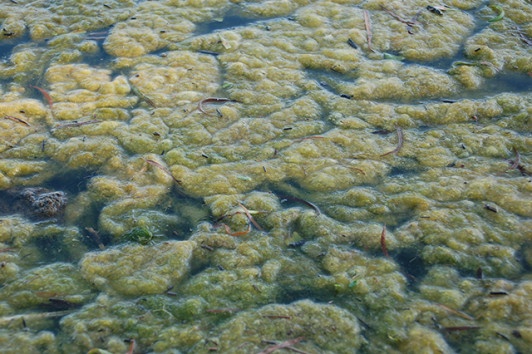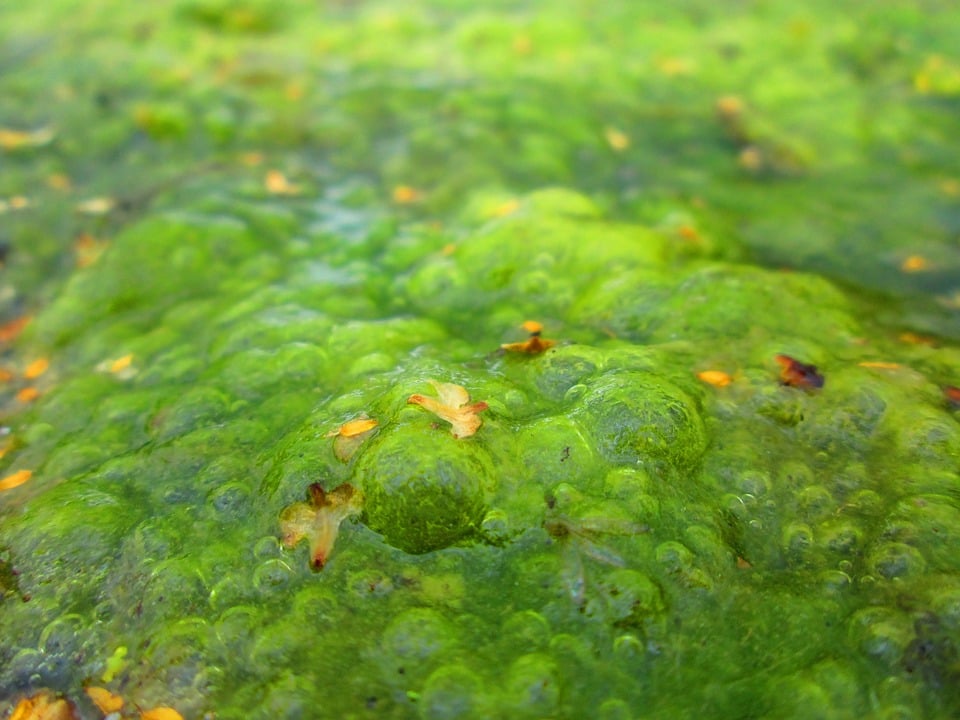Spring has sprung! Anglers are getting in their boats, hitting their secret honey holes, and the plants are coming back to life. Unfortunately, there is no exception for the pesky pond plants. Here, we will cover removing said pest plants, but remember not all aquatic vegetation is bad.
In fact, there are plants, including the American Pond Weed that can be quite beneficial for your pond or lake. Nuisance plants are typically invasive and quickly reduce access to the pond and can over time cause problems with fish population dynamics. There are three different ways to help control vegetation in your pond: biological, mechanical, and chemical. Here we take a look at each.
Biological Controls
The biological method to controlling aquatic vegetation is using nature against nature. Under the right conditions using fertilizer can actually reduce the submerged vegetation in your pond. Now this may seem a little counter intuitive, but when you fertilize a pond you are inducing a plankton bloom. A plankton bloom will turn your water a greenish color because the large amount of plankton reduces the clarity of the pond. With water clarity of 18”-24” the sunlight will not be able to penetrate to the bottom of your pond to increase your submerged vegetation.
The added benefit to fertilization is that your baitfish are now going to have an excellent boost to their food chain, and you should see a size increase in your baitfish. However, it is best to fertilize your pond proactively, when established vegetation is just along the edges or at least 24” below the water surface, and not when you have overgrown vegetation. This can cause plants like bushy pondweed to grow out of control. You also want your water temperature to be over 65 degrees. Lake fertilization is a good, cost effective way to get a dual benefit for your pond.
Another biological control would be the addition of grass carp and tilapia. In some states, grass carp require a permit, and must be triploid (sterile) to avoid overpopulating and preventing all vegetated growth for the life of the pond. Grass carp are able to eat their body weight in vegetation each day. They can reach sizes of 3-4’ in length and weigh 30-40lbs. Their diet is composed mainly of submerged vegetation, which makes them a good solution for plants like bushy pondweed and other invasive plants. Tilapia on the other hand will help control your floating mats of filamentous algae.

This is the stringy, green moss that covers your lures and takes away some of the beauty of the pond. Tilapia also make excellent supplemental forage for your bass due to their quick reproduction, mouth brooding, and growth rate. They convert unwanted vegetation to pounds on your bass. One downside to tilapia is that they die when the water temperature drops, however you can harvest the larger ones with a dip net, and put them on the table for dinner. Your bass will take care of the smaller ones and beef up for the winter.
Mechanical
Mechanical methods of controlling aquatic vegetation equal hard work. Dredging, raking, and seining are means of mechanical removal. All of these equate to pulling the plants out and dragging them ashore.
This is an instant gratification means of removal, but can be problematic since many aquatic plants can grow from fragments of the parent plant. Mechanical removal is a useful short-term control method, and can be used in tandem with other methods.
Chemical
Spraying herbicides is a popular method used to remove unwanted plants. When using chemical methods to control your pest plants, be sure you are educated on the chemicals you use and the amounts you are putting into the pond, because you can inadvertently harm desirable plants, and even kill your fish. Herbicide treatment is typically applied, as needed depending on the amount of vegetation, and the environment of the pond. There are two types of chemical treatment, contact and systematic. Contact will immediately kill the plants, while systematic will slowly kill the vegetation over a longer period of time.
If your pond has vegetation issues or a history of unwanted aquatic plants, it is important to keep it under control. A fishing pond is useless if you have no room to fish without getting covered up in the weeds on each retrieve.
Happy Fishing!
Brad Metzler, President



